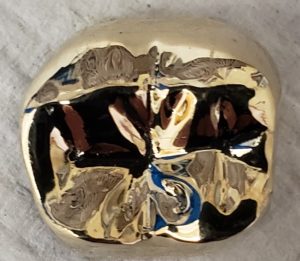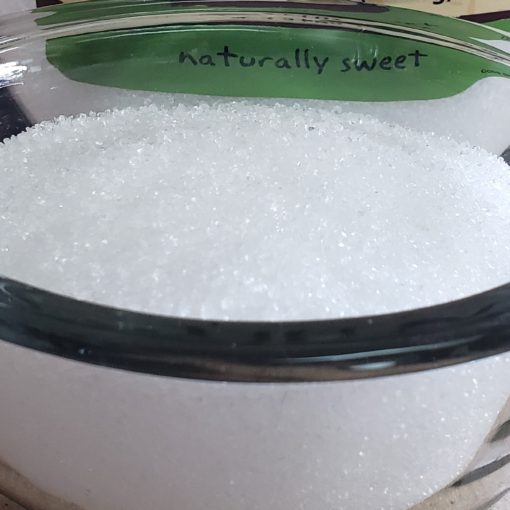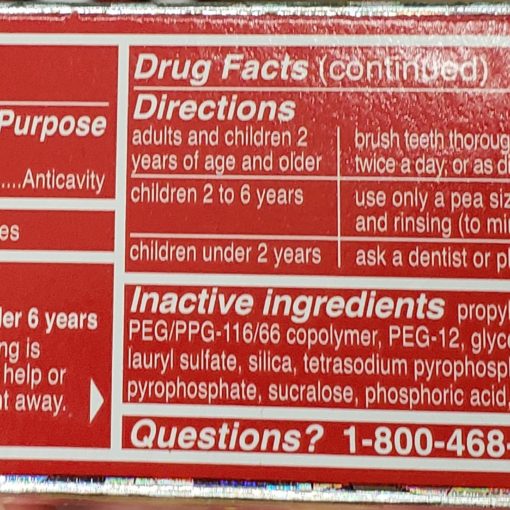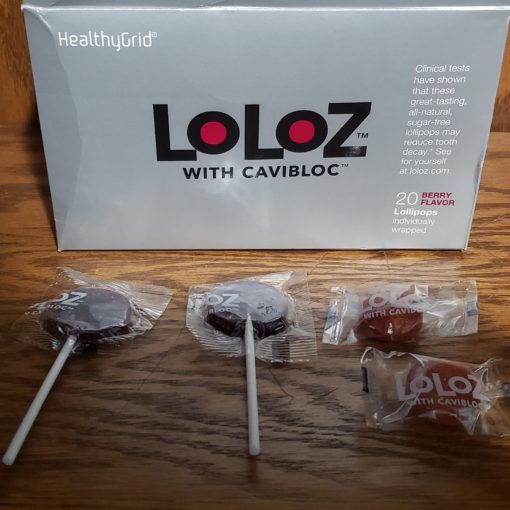RESTORATIONS
Restorations are used interchangeable for fillings or crowns. It’s restoring the tooth with another material than the tooth itself. Restorations are needed when a chunk of the tooth is injured by decay, a break, or a chip. A filling is placed in the tooth to replace the hole in the tooth, to keep the tooth as stable as it can be. It’s like patching a hole in the wall. The smaller the hole the smaller the patch, the bigger the hole the bigger the patch.
Quite often patients will ask how long do fillings or crowns last. They all have “average life spans” but keep in mind they could last longer or shorter than what’s expected. A few variables come in play with this, such as: the quality of the prep of the tooth, placement of the filling, quality of material and how well it’s kept clean in the mouth through brushing and flossing.
Types of filling material

This type of filling is a mixture of metals commonly known for having mercury. The metal content includes tin, copper, mercury, silver, zinc and trace metals. An amalgam filling slowly strengthens, and takes up to 24 hours to fully strengthen after being placed. It’s usually instructed to not apply stress and eating hard foods on the filling for up to 24 hours. To place the filling, more tooth structure is removed than on a white filling for better retention with the tooth. Amalgam fillings are more tolerable to the mouth environment when placing, it’s not as technique sensitive as a white filling.These fillings have an average life span of 12-15 years. Because of the metal they expand with the tooth with temperature, so it can increase the risk of superficial fractures in the tooth.
Note on mercury since it’s controversial. Dental fillings use a minimal amount of elemental mercury to help bind the silver, copper and tin together. Amalgam fillings have been used for more than 150 years. Low doses of mercury is mostly released through its vapors, when the filling is removed. The FDA states it’s safety in ages six and older and in most people, while a small percentage actually have an contraindication.
More technique sensitive than amalgam. Less tolerable with saliva when being placed and is placed in layers. Less tooth structure is removed. These fillings have a bulkier margin and tend to get recurrent decay around them when they are used between the teeth. Average life span 5-7 years.
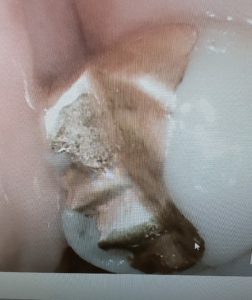 old inlays (filled into the tooth) and Gold onlays (cover and replace parts of the tooth): pretty much last forever. I find the older dentists do these types of fillings better since it’s not widely used anymore. Average life span 20-30 years.
old inlays (filled into the tooth) and Gold onlays (cover and replace parts of the tooth): pretty much last forever. I find the older dentists do these types of fillings better since it’s not widely used anymore. Average life span 20-30 years.
Crowns
Gold: Is made with noble and high noble alloys. Pure gold is too soft and has poor mechanical strength, so it must be combined with other metals. Gold is the main ingredient with the highest percentage (60-80%) in the crown, it also may include copper, platinum, palladium, zinc, indium, and nickel.
Gold
High Noble Alloy (precious metal): Made from a minimum of 60 % high noble alloy. Includes gold, platinum, and palladium. 40 percent must be gold.
Noble Alloy (non-precious metal): A noble alloy consists of 25% precious metal.
Non-Noble Alloy (non-precious Metal): Made from less than 25% precious metals.
These crowns are usually recommended for the posterior teeth due to aesthetics. Gold crowns are the hardiest (I have often seen patients having gold crowns for over 40 years), have a long life span and best adaptable with the force of chewing. Many times, they are recommended for grinders and clenchers since they withstand the force better than other crowns. Also recommended for people with a strong bite. Will cause the same amount of wear on the opposing tooth as enamel. If the gold crown breaks it’s usually from the underlying tooth structure that has decayed or fractured.
Composites
Zirconia, Silica, Porcelain Resins Very aesthetic, to blend in with the surrounding teeth. Can collect stain. Made of ceramic and variations of glass heated in an oven at high temperatures to fuse the components together. Has the highest risk for breaking and chipping due to lack of strength, since it’s more of an aesthetic choice. Best for the front teeth since they don’t take the force of chewing and biting. Is also high risk of wearing down the opposi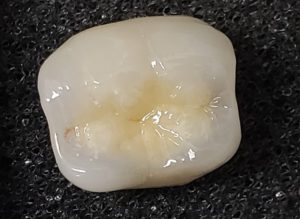 ng teeth. Great for people with metal allergies.
ng teeth. Great for people with metal allergies.
Ceramic: made from a glass like substance such as porcelain. And have superior aesthetics.
Resins: are made from a nontoxic tooth colored plastic and glass beads. More likely to break and in many cases used for temporary crowns.
P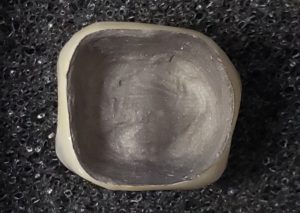 orcelain fused to Metal: Metal is the base of the crown which adheres to the tooth and porcelain is what the outside what we see, for aesthetics. Using the metal base makes it stronger for force. If recession happens after the crown is placed years down the road it can expose the metal looking like a gray line at the gumline. The metal can have an average life span of 15 – 20 years.
orcelain fused to Metal: Metal is the base of the crown which adheres to the tooth and porcelain is what the outside what we see, for aesthetics. Using the metal base makes it stronger for force. If recession happens after the crown is placed years down the road it can expose the metal looking like a gray line at the gumline. The metal can have an average life span of 15 – 20 years.
Glass Ionomers
Glass Ionomers are a mixture of acrylic acids and fine glass powders. Being tooth colored and while not as strong or durable on chewing surfaces for a permanent solution, they’re more ideal for an emergency filling or a temporary filling, commonly with root canals. Glass ionomer fillings releases fluoride, to make them ideal for baby teeth, rampant decay, root surface fillings and sedatives under deep fillings. It’s technique sensitive when placing and must have a dry environment. Not as good cosmetically as other composites.
Veneers
Dental veneers are thin custom-made coverings for teeth. They are tooth colored and cover the front surface of the upper front teeth. They are purely cosmetic and are popular to change the color, shape, size, or length of a tooth. Veneers would be in comparison of placing fake fingernails on nails. It’s superficial and glued on.
Choosing to do a veneer requires two appointments. The first visit the dentist will remove about ½ millimeter of enamel. An impression is taken and sent to the lab. It usually takes about 2-4 weeks for the lab to make.
Galvanic shock
Galvanic shock as an electric charge in the mouth between fillings. This occurs by an electric current between metal fillings and the electrolytes in saliva. This “zap” although obvious, is rare. It feels similar to biting on tin foil. This happens when two metal fillings or dissimilar metals come together or are placed too close together. This tends to happen when different dentists place fillings, since there can be a difference in ingredients in the fillings. The most common occurrence is an amalgam filling that occludes with a gold restoration.

